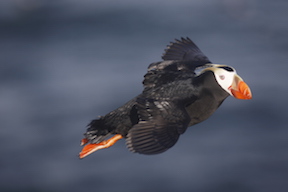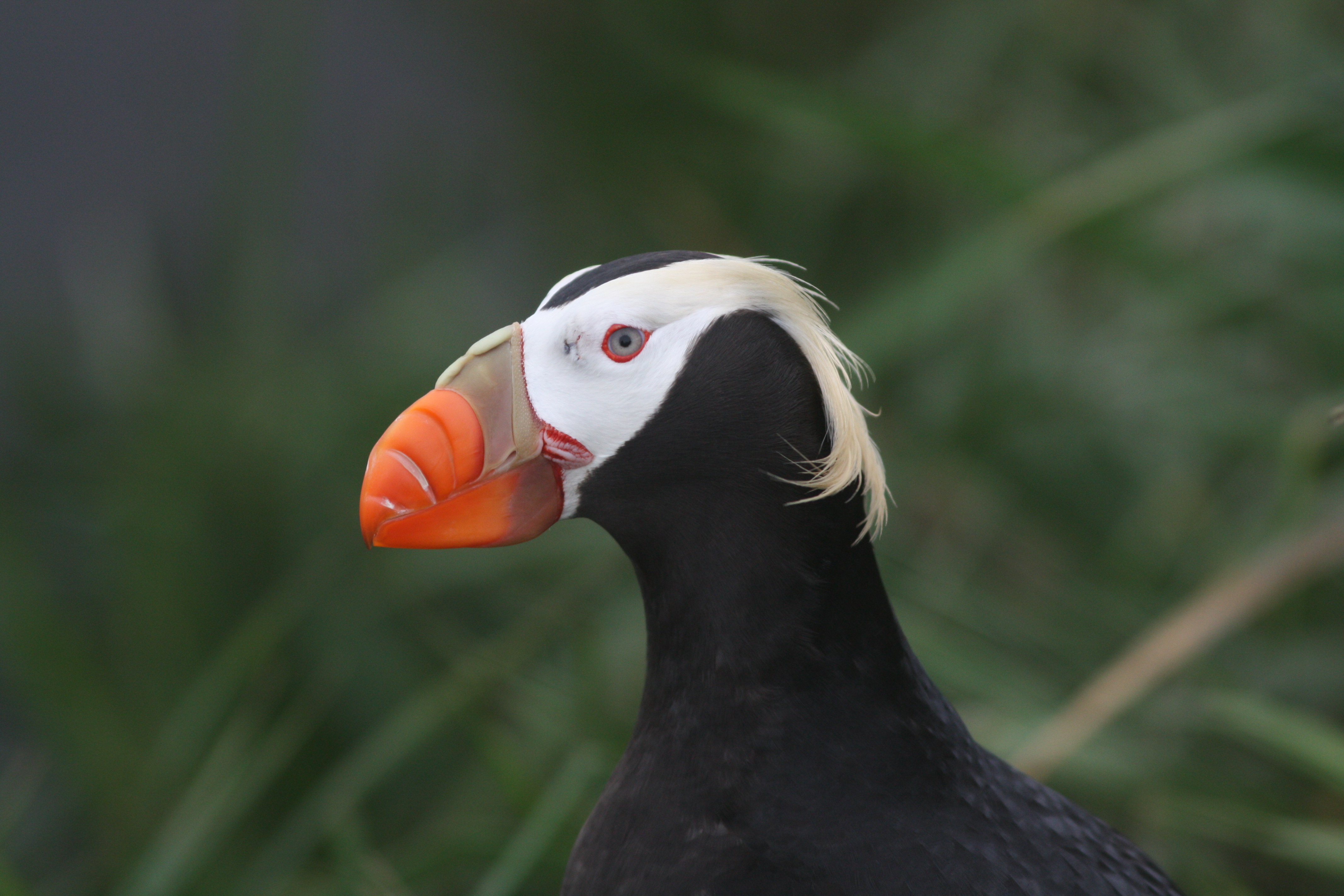The seasons have shifted, and birds everywhere are preparing for the nesting season by migrating back to their breeding grounds.
For Tufted Puffins, seabirds of the central and north Pacific, this means finding their way back to earthen burrows at coastal breeding sites. This time of year, we expect puffins to be arriving at their breeding colonies and forming pair bonds, as well as attending to their burrows and creating feather-lined nests in preparation for laying their single egg.
This return to the breeding colony follows an entire winter spent out at-sea, an important part of the annual cycle that is not well understood for many seabird species.
This summer, researchers from Prince William Sound Science Center and University of Alaska Fairbanks will continue their work to increase our understanding of the over-winter distribution of Tufted Puffins in the Gulf of Alaska.
Last summer, researchers deployed miniature geolocator tags on 30 nesting tufted puffins at Middleton Island. These puffins carried the tags all winter, and these tiny tags should have collected the data that will help us solve the mystery of where these birds went.

Tufted puffin in flight, taken by Ram Papish
Researchers will return to Middleton next month. Their aim is to recatch the tagged birds. The plastic leg-band with the attached geolocator will be gently taken off the bird, and the data downloaded. Although catching targeted individuals in a colony of thousands of birds sounds an unrealistic challenge, puffins generally use the same nesting burrow year after year.
The data that are retrieved from the tag will show us where these puffins spent their winter, and these regions can be examined in relation to oceanographic variables to better understand the marine habitats where these birds spend their winter.
Later this summer, researchers will return to Middleton Island and deploy another 30 geoloctaor tags on different adult puffins. These tags will collect a second year of information about where these birds spend their winter.
The scientists are eager to get back to Middleton to try to catch these important birds. Stay tuned for reports on their progress in the field!

